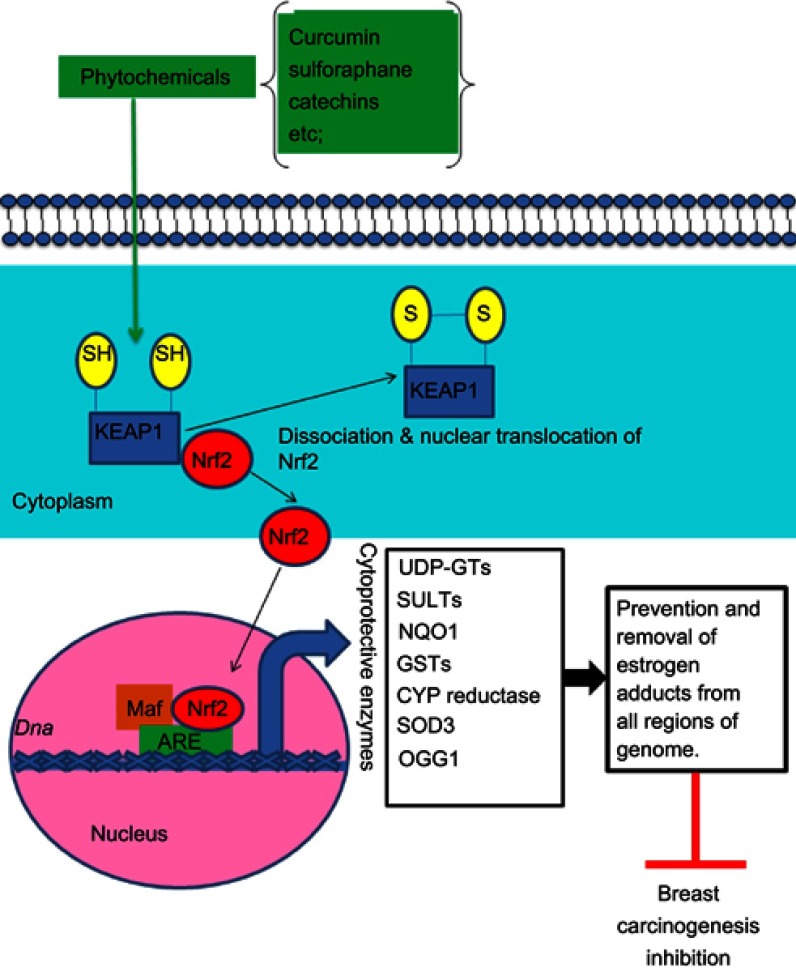Figure 2.
Schematic representation of the Nrf2–ARE pathway activated by phytochemicals. Curcumin, sulforaphane, and green tea catechins are capable of inhibiting the formation of ROS and estrogen genotoxic metabolites such as catechol estrogens, semiquinones, and mutagenic/reactive estrogen quinones by inducing several cytoprotective enzymes such as UDP-GTs, SULTs, NQO1, GSTs, SOD3, and OGG1 through activation of the Nrf2–ARE pathway. OGG1 is the rate-limiting enzyme of the DNA base excision repair pathway implicated in the removal of 8-hydroxydeoxyguanosine adducts from DNA. Notably, the catechol-O-methyltransferase enzyme, which catalyzes the methylation of catechol estrogens to nongenotoxic methoxyestrogens, blocking their further oxidation to semiquinones and mutagenic quinones, is not represented because it is induced by phytochemicals through Nrf2–ARE-independent mechanisms.
Abbreviations: ARE, antioxidant responsive elements; CYP, cytochrome P450; GST, glutathione S-transferase; Nrf2, nuclear factor-erythroid 2-related factor 2; NQO1, quinone reductase; OGG1, 8-oxoguanine DNA glycosylase; SULT, sulfotransferase; UDP-GT, UDP-glucuronosyltransferase.

